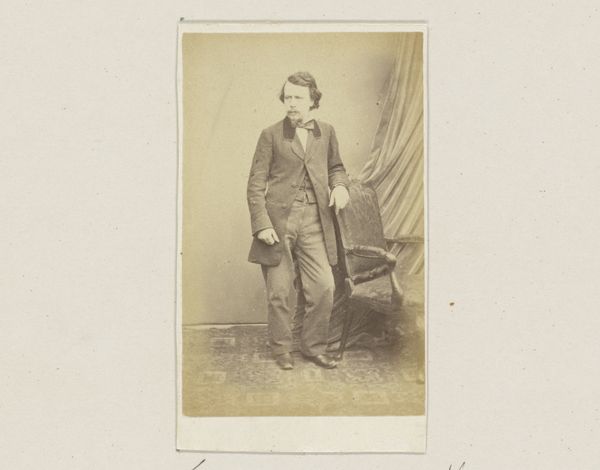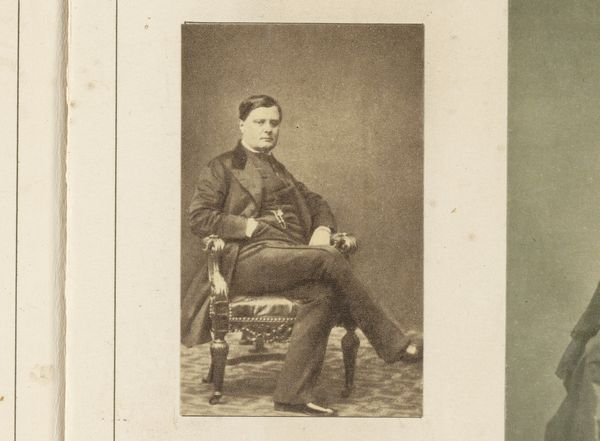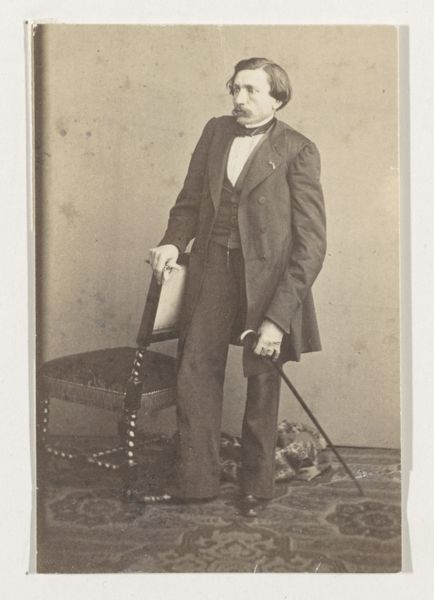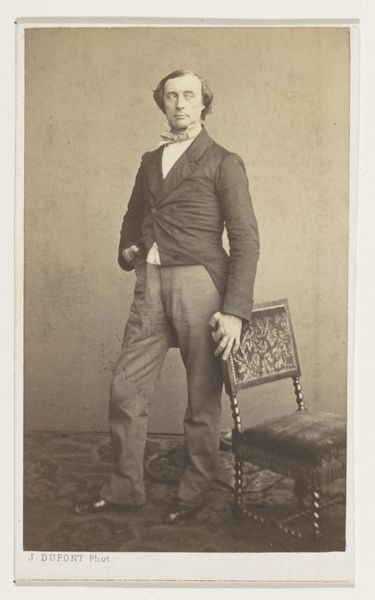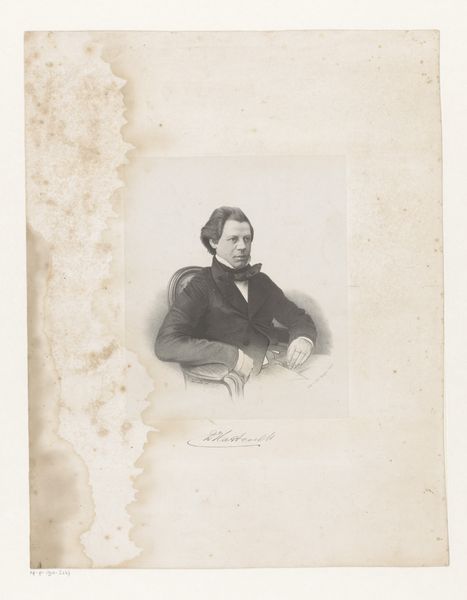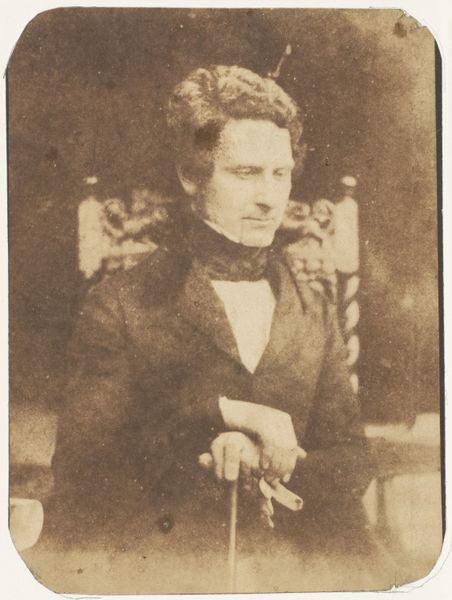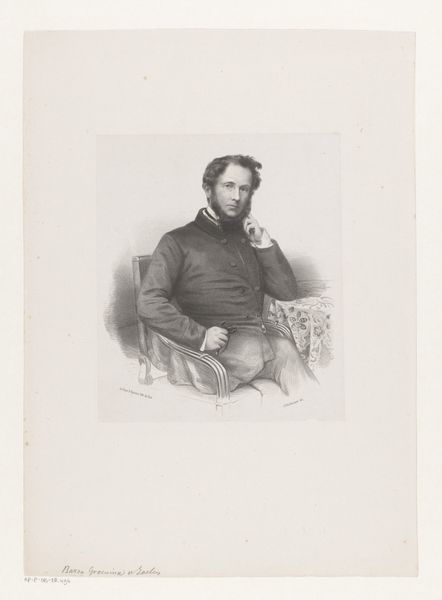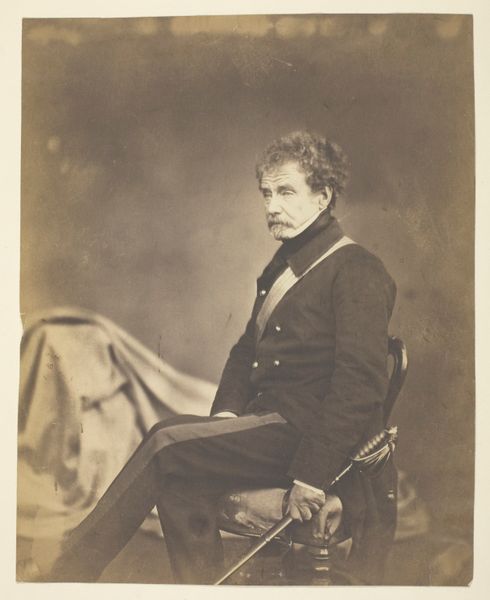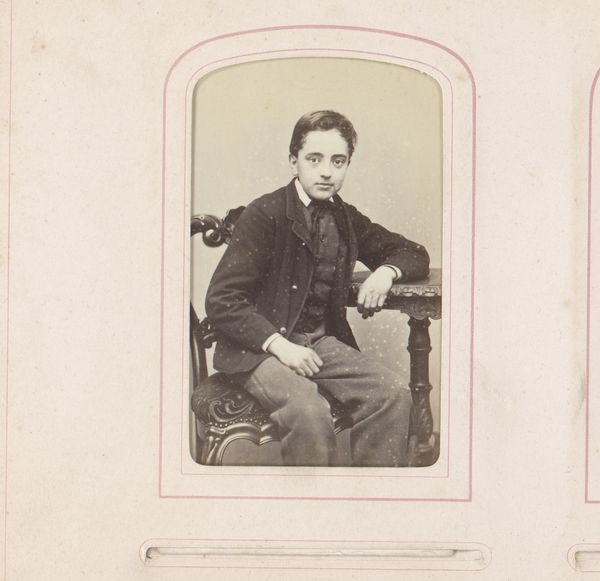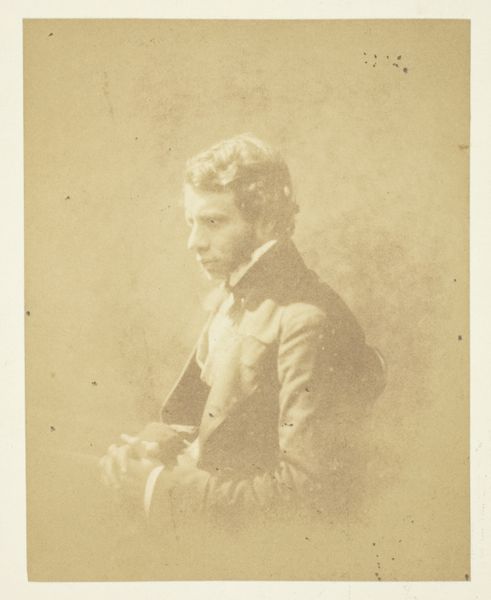
Dimensions: height 122 mm, width 110 mm
Copyright: Rijks Museum: Open Domain
Curator: Here we have a gelatin-silver print from 1857, an anonymous portrait of Abraham Kuyper now residing at the Rijksmuseum. Editor: There's such a posed stiffness, almost fragile in its formality. It makes me think about the constraints of representation and social identity during that time period. The overall sepia tones contribute to its feeling of historical weight. Curator: Yes, it’s incredibly representative of 19th-century portraiture. Note the compositional devices: the book and the ornate table, signifiers of education and wealth; his seated posture, exuding both relaxed control and cultivated image. Even the walking stick suggests an almost theatrical sense of self-presentation. Editor: Definitely. But it’s interesting how his youth disrupts that reading, even under the sartorial constraints of the day. You sense ambition mixed with this performed adulthood, especially when we place Kuyper’s later history within this context. I wonder what stories lie behind this ambition and its intersection with his developing ideologies and social standing. Curator: Given Kuyper’s later prominence in Dutch politics and theology, it’s tempting to read prophetic meaning into his composed gaze. What do you see there? Does the symbol of his youth contrast against established symbols of authority and intelligence? Editor: Precisely. The visual cues are so loaded. The composition makes this photograph into a social document. His gaze seems defiant, but he is complicit in upholding a conservative patriarchal image. Considering Kuyper's role in shaping conservative political spheres, his portrait here encapsulates complex relations with authority and self-perception, both performative and perhaps genuine. Curator: Looking closely, one sees the traces of a past reality made tangible— a world of beliefs and certainties we no longer possess, which helps illuminate what elements might endure across time and culture. Editor: It pushes us to question whose stories are deemed worthy of preservation, and how those stories can serve different political agendas through time. Photography promised to represent subjects, and thus societies, as truthfully as possible. But this portrait reminds me that truth is not so easily, objectively accessible in portraiture or politics.
Comments
No comments
Be the first to comment and join the conversation on the ultimate creative platform.
